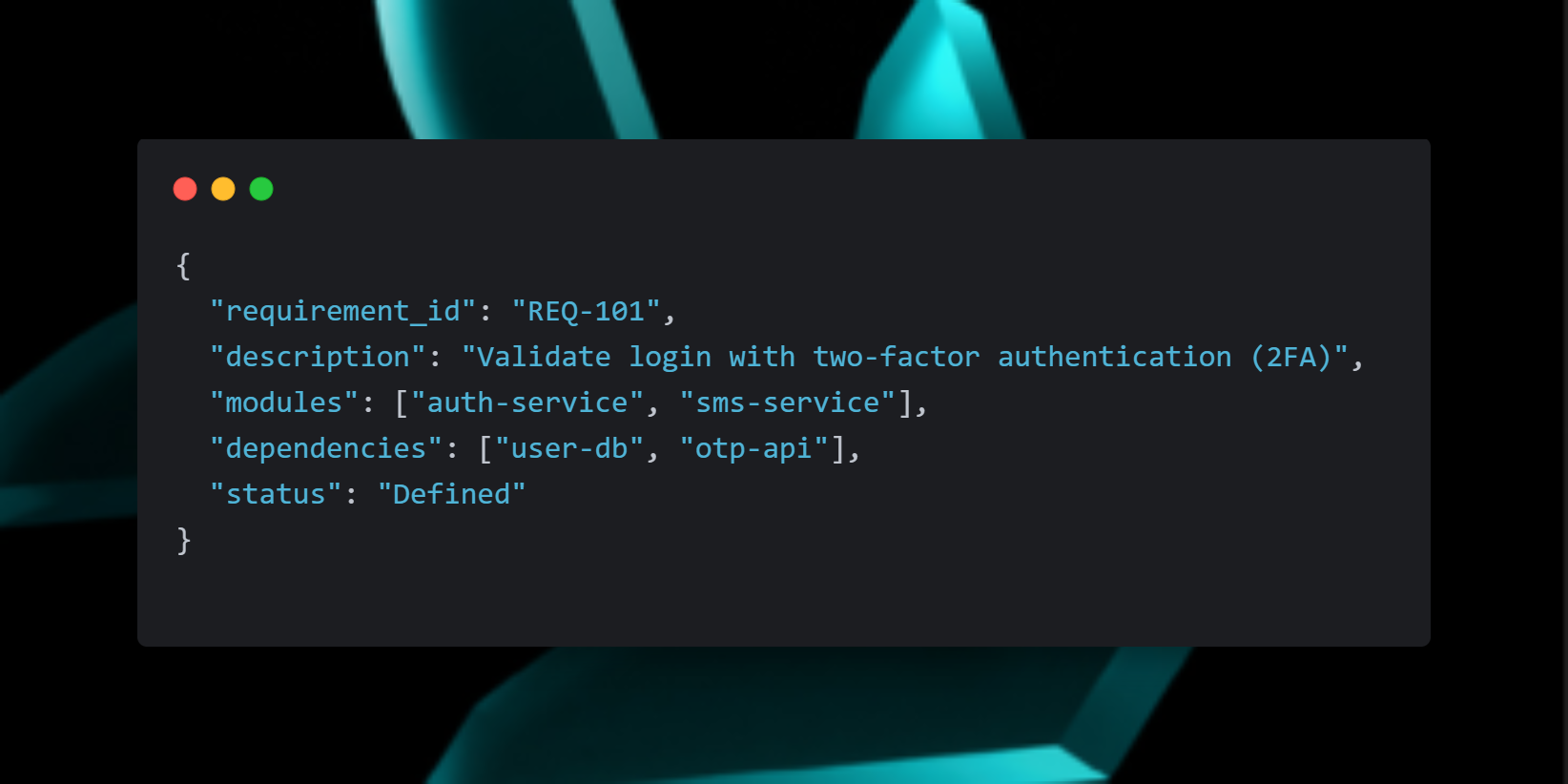December 18, 2025
Introduction: Why AI-Driven Requirement and Testing Matter
In today’s competitive software landscape, success depends on precision, adaptability, and reliability. Yet, ambiguity in software requirements and manual testing continue to cause delays and rework.
Traditional development cycles rely heavily on manual documentation, late-stage testing, and disconnected validation. These gaps often lead to misaligned expectations, missed deadlines, and quality issues. The modern SDLC requires a connected model that captures intent, converts it into structured, code-ready modules, and validates changes automatically.
This is where ReqSpell and TestSpell come together to form an AI-driven software factory that unifies requirement management, reverse engineering, test automation, and requirement validation in one streamlined flow.
1. The Requirement Chaos Every Engineering Team Faces
The Common Challenges
Most engineering teams still manage requirements using spreadsheets, emails, and static documents. This fragmented approach creates multiple challenges:
- Poor traceability between requirements, design, and testing
- Inconsistent understanding across teams
- Delayed validation due to late QA involvement
- Repetitive reverse engineering for legacy systems
When this happens, teams lose time, visibility, and confidence in their releases.

2. Reverse Engineering as a Requirement Enabler
Reverse engineering is more than just understanding old systems. It helps teams extract valuable information from existing applications, uncover dependencies, and rebuild missing documentation.
With ReqSpell, teams can reverse engineer legacy codebases to identify modules, dependencies, and function-level details. This information is then transformed into structured, testable requirements.
Example Output from ReqSpell’s Requirement Parser:

This process brings clarity to the most complex systems and provides a foundation for accurate requirement validation.
3. ReqSpell: The Requirement Intelligence Layer
ReqSpell acts as the requirement intelligence engine that bridges unstructured inputs with structured, actionable data.
Core Capabilities
- Converts unstructured text, PDFs, and comments into requirement data
- Identifies dependencies between modules and services
- Creates a dynamic traceability graph from requirement to test case to release
- Integrates with tools like Jira, Confluence, and GitHub
Example: Reverse Engineering a Function from Code Snippet

ReqSpell Output:
- Requirement: Validate 2FA for users
- Test Condition: OTP should be generated successfully for both SMS and Email
- Dependencies: OTP Generation API, Notification Service
By connecting business intent to code behavior, ReqSpell eliminates guesswork and brings traceability across the SDLC.
4. TestSpell: From Requirement to Continuous Validation
Once ReqSpell defines and structures requirements, TestSpell transforms them into automated validation workflows.
Core Capabilities
- Generates test cases directly from structured requirements
- Supports API, UI, and mobile testing
- Integrates with CI/CD pipelines for continuous testing
- Automatically updates test cases when requirements change
Example: Auto-Generated Test Case from ReqSpell Requirement

With TestSpell, testing becomes a continuous process that evolves in sync with every code change, ensuring faster feedback and higher reliability.
5. The Automation Flow: From Text to Tested Release
The integration between ReqSpell and TestSpell forms a continuous feedback loop:
- ReqSpell extracts and structures requirements from any format.
- TestSpell converts these requirements into executable test cases.
- Test cases are executed automatically within the CI/CD environment.
- Results sync back into the traceability dashboard for visibility.
This creates a self-validating development ecosystem where documentation, testing, and release are interconnected and automated.
6. From Manual Bottlenecks to Reliable Releases
The combination of ReqSpell and TestSpell enables full lifecycle automation and traceability. Every requirement is connected to its test, and every test is tied to a release outcome.
By shifting from reactive testing to proactive validation, teams can deliver software that is both faster and more reliable.
7. Business Impact: Turning Precision into a Competitive Edge
This transformation extends beyond technical efficiency. By adopting ReqSpell and TestSpell, organizations can achieve measurable business value:
- Faster release cycles through automation
- Improved software quality with early defect prevention
- Reduced rework and lower operational costs
- Stronger compliance through traceable workflows
- Enhanced collaboration between business, development, and QA teams
The outcome is a more predictable, efficient, and intelligent software delivery ecosystem.
Conclusion: From Requirements to Release, Seamlessly Automated
The AI-driven software factory represents a shift in how software is built and validated. With ReqSpell and TestSpell, teams move from static documentation and manual testing to an automated, intelligent SDLC where every requirement is actionable and reliable.
This approach redefines the software development process. Requirements are no longer just written; they are engineered, connected, and continuously validated.
That is the promise of the AI-Driven Software Factory.


.png)






.png)
.png)